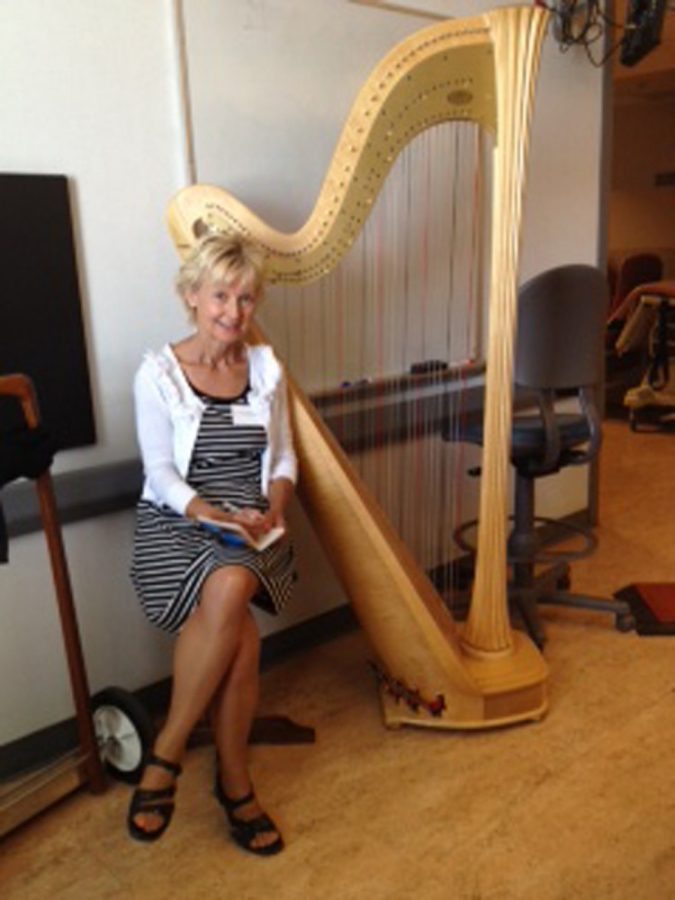Carrol McLaughlin sat in a patient’s hospital room, plucking the strings of a harp. Her audience was silent — the patient had been in a coma for several days. But as the minutes passed, something happened. He woke up.
When he awoke, after 10 minutes of McLaughlin playing the harp for him, he thanked her, she said.
The patient was one of 100 subjects in a study by researchers at the University of Arizona Medical Center. Although most of the subjects did not have the same reaction as the patient did, the study did enable researchers to see some possible effects of harp music on the healing process.
“I know it works,” said McLaughlin, a harpist for 33 years and a UA music professor. “But my educational side wants to prove how it works and why it works.”
McLaughlin partnered with Ann Chiasson, who works for the Arizona Center for Integrated Medicine, and Ann Baldwin, a research professor in the department of physiology, to specifically study the effects of performing harp music in the intensive care unit on patients with critical heart conditions.
Researchers selected 100 participants between the ages 23 and 80 for the control experiment. Half the patients received 10 minutes of harp music. The other half received 10 minutes of rest.
Although the study has not yet been finalized, researchers noticed a significant difference in many patients’ blood pressure. Patients who heard the harp music experienced a drop in blood pressure, yet patients who only received resting time showed no change in their condition, Baldwin said.
Baldwin measured the blood pressure, the heart rate and the pain level of patients in both study groups before and after the 10-minute period.
“With the harp people, their pain level was significantly reduced,” she said. “It put them in a better stage and a better balance.”
Music invokes different emotions, Baldwin said, and these emotions affect the nervous system and heartbeat.
The patients who McLaughlin played the harp for and who had dangerously low blood pressure indicated a rise in their blood pressure level. Those who had dangerously high blood pressure indicated a drop in their blood pressure level to a safer level, McLaughlin said. The vibrations of the harp appeared to help patients find a consistent breathing pattern.
“If you think about the body, the breath happens in a rhythm,” she said. “The blood flows in a rhythm which is all vibration, and vibration is equivalent with sound.”
This became a starting point, McLaughlin said, for improvising the harmony of the music. Once the breathing and the blood circulation are in a cohesive state, healing can happen, she said.
“I just became aware that the sounds could be gently led to go through vibration, which are more peaceful to the body harmoniously,” she added.
Researchers are still looking at the data, Chiasson said, and studying whether patients became more relaxed specifically because of the harp music or because of the presence of another person in the room.
Helping patients with the healing process has been a rewarding experience, McLaughlin said.
“How fabulous is it,” she said, “that my tools that can take me to play at an opera house in Russia can also take me to a hospital room where I can impact somebody’s life?”









